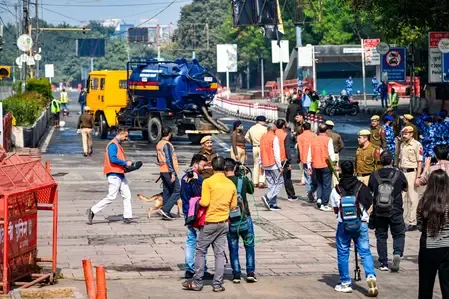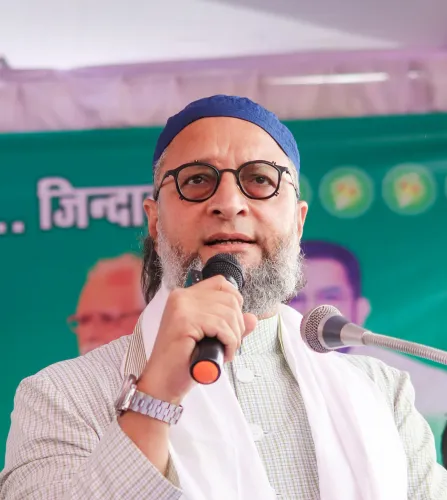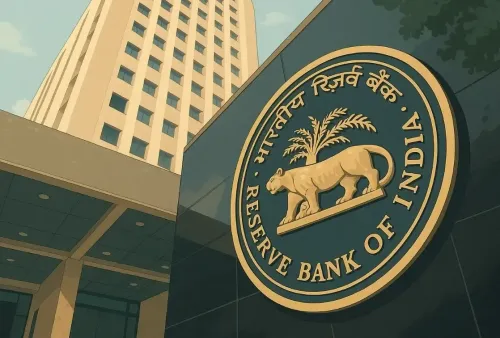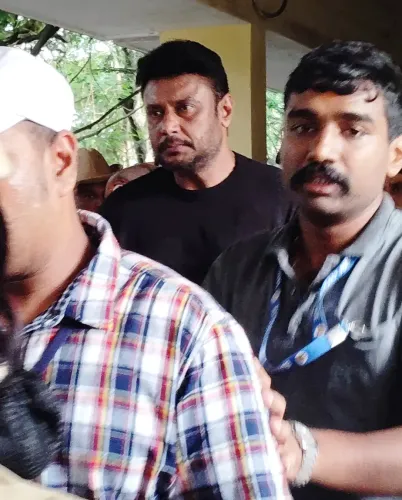Could the Delhi Red Fort Blast Signal an Expanding Transnational Terror Network?

Synopsis
Key Takeaways
- Emerging transnational networks complicate security operations.
- Increased foreign terror group involvement poses significant challenges.
- Intelligence adaptations are crucial to counter evolving tactics.
- Strategic vigilance is necessary to maintain national security.
- Conventional methods may need reevaluation in response to new threats.
New Delhi, Nov 19 (NationPress) Security agencies investigating the Delhi Red Fort blast are delving into the numerous international connections that significantly aided Jaish-e-Mohammed. It has been confirmed that the individual orchestrating the attack was a Pakistani national operating from Afghanistan, and the potential involvement of Hamas is also being considered.
Since October 7, 2023, the day Hamas launched a surprise attack on Israel, resulting in over 1200 fatalities, Hamas leaders have been engaging with members of Jaish-e-Mohammed and Lashkar-e-Taiba.
Following Operation Sindoor, which aimed to provide assistance to terror groups suffering significant losses from Indian armed forces' actions in retaliation for the Pahalgam attack, the frequency of visits by Hamas leaders has seen a marked increase.
According to Intelligence Bureau officials, the establishment of the Faridabad module and the Delhi blasts are linked to Jaish-e-Mohammed. This group has been conducting operations in India for an extended period, but a troubling trend is emerging. The ISI is increasingly involving foreign terror organizations in operations based within India.
Although the Delhi strike was likely executed by Jaish-e-Mohammed, intelligence suggests it had tactical backing from both Islamic State and Hamas. Prior to the Delhi incident, members of the Faridabad module were reportedly planning to modify drones for weaponization, intending to deploy them as rockets for attacks across various regions in the country. Investigators believe this concept may have been proposed by Hamas leaders during their visits to Pakistan.
Hamas is known for operating in this manner, which suggests they may have advised Jaish-e-Mohammed on such tactics. Officials indicate that had this plan been executed, the resultant damage and casualties could have been catastrophic.
The involvement of the Islamic State Khorasan Province (ISKP) is also under scrutiny. Forensic analyses reveal that the explosives utilized consisted of Triacetone triperoxide (TATP) combined with ammonium nitrate—a favored explosive among the Islamic State, used on various occasions. It is believed that the handler in Afghanistan may have consulted with the ISKP for guidance on preparing this explosive mix.
Engaging both ISKP and Hamas for operations on Indian soil indicates a perilous strategy by the ISI. The agency seems intent on forming a global coalition of terrorists against India, which presents a significant challenge for security forces. Such a coalition implies that terror groups may abandon conventional approaches. The nature of explosives utilized and the style of operations are likely to differ, necessitating that Indian agencies continuously adapt to the evolving landscape, making the situation increasingly complex, security officials warn.
The changing dynamics also pose new challenges for intelligence operations. The ISI is evolving its tactics, forcing conventional methods to be reassessed. An official from the Intelligence Bureau stated that the situation is rapidly transforming, requiring an adaptive strategy. The Delhi blast indicates that the ISI might temporarily shift focus from Jammu and Kashmir to other regions in India. Pakistan appears to be expanding its operational territory, which will likely complicate the tasks facing security agencies in the near future.









